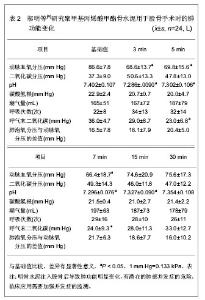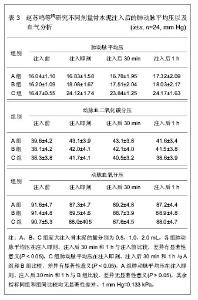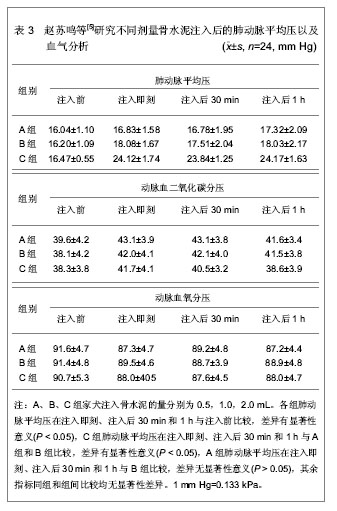| [1] Gangi A, Guth S, Imbert JP, et al.Percutaneous vertebroplasty: indications, technique, and results.Radiographics. 2003;23(2): e10.[2] Scroop R, Eskridge J, Britz GW.Paradoxical cerebral arterial embolization of cement during intraoperative vertebroplasty: case report.AJNR Am J Neuroradiol.2002;23(5):868-870.[3] 中国知网.中国学术期刊总库[DB/OL].2013-04-12. https://www.cnki.net[4] 邬明,姚国杰,陈谦.骨水泥用于股骨手术时心肺功能变化的实验研究[J].华南国防医学杂志,2005,19(5):5-7.[5] 赵苏鸣,戴瑞茹,黄健,等.犬急性骨水泥肺栓塞的实验研究[J].介入放射学杂志,2012,21(1):55-60.[6] 周天宇.骨水泥单体对新西兰白兔心肺功能的影响[D].江苏:南京医科大学,2010:4-6.[7] 陈丽英.普通肝素和低分子肝素治疗急性肺血栓栓塞症的研究[D].浙江:浙江大学,2003:3-9.[8] 齐向北.骨水泥肺栓塞及其干预措施的实验和临床研究[D].河北:河北医科大学,2009:66-80.[9] Martin JB, Jean B, Sugiu K, et al.Vertebroplasty: clinical experience and follow-up results.Bone.1999;25(2 Suppl): 11S-15S.[10] Parvizi J, Holiday AD, Ereth MH, et al.The Frank Stinchfield Award. Sudden death during primary hip arthroplasty.Clin Orthop Relat Res. 1999 Dec;(369):39-48.[11] Duncan JA.Intra-operative collapse or death related to the use of acrylic cement in hip surgery.Anaesthesia.1989; 44(2):149-153.[12] Patterson BM, Healey JH, Cornell CN, et al.Cardiac arrest during hip arthroplasty with a cemented long-stem component. A report of seven cases.J Bone Joint Surg Am.1991;73(2): 271-277.[13] 王丹,张成顺,赵炬才.人工关节置换术与心肺功能障碍[J].国外医学(生理、病理科学与临床分册),2000,20(5):409-410.[14] 席平昌,李强一.骨科领域中脂肪栓塞综合征的预防[J].中国矩形外科杂志,2000,7(6):588-589.[15] Dahl OE.Cardiorespiratory and vascular dysfunction related to major reconstructive orthopedic surgery.Acta Orthop Scand. 1997;68(6):607-614.[16] 艾克拜尔•艾拜也都拉,吴彦生,胡炜,等.脊柱手术后静脉血栓栓塞的2种预防方案比较[J].新疆医科大学学报,2010,33(10): 1257-1259.[17] 高乐才,吴文元,魏金栋,等.利伐沙班与低分子肝素对髋、膝关节置换术后隐性失血影响的对比观察[J].现代中西医结合杂志, 2013,22(7):721-722.[18] Eriksson BI, Borris LC, Friedman RJ, et al.Rivaroxaban versus enoxaparin for thromboprophylaxis after hip arthroplasty.N Engl J Med.2008;358(26):2765-2775.[19] Kakkar AK, Brenner B, Dahl OE, et al.Extended duration rivaroxaban versus short-term enoxaparin for the prevention of venous thromboembolism after total hip arthroplasty: a double-blind, randomised controlled trial.Lancet.2008; 372(9632): 31-39.[20] Lassen MR, Ageno W, Borris LC, et al.Rivaroxaban versus enoxaparin for thromboprophylaxis after total knee arthroplasty.N Engl J Med.2008;358(26):2776-2786.[21] Turpie AG, Lassen MR, Davidson BL, et al.Rivaroxaban versus enoxaparin for thromboprophylaxis after total knee arthroplasty (RECORD4): a randomised trial.Lancet.2009; 373(9676):1673-1680.[22] McNally MA, Cooke EA, Mollan RA.The effect of active movement of the foot on venous blood flow after total hip replacement.J Bone Joint Surg Am.1997;79(8):1198-1201. |



